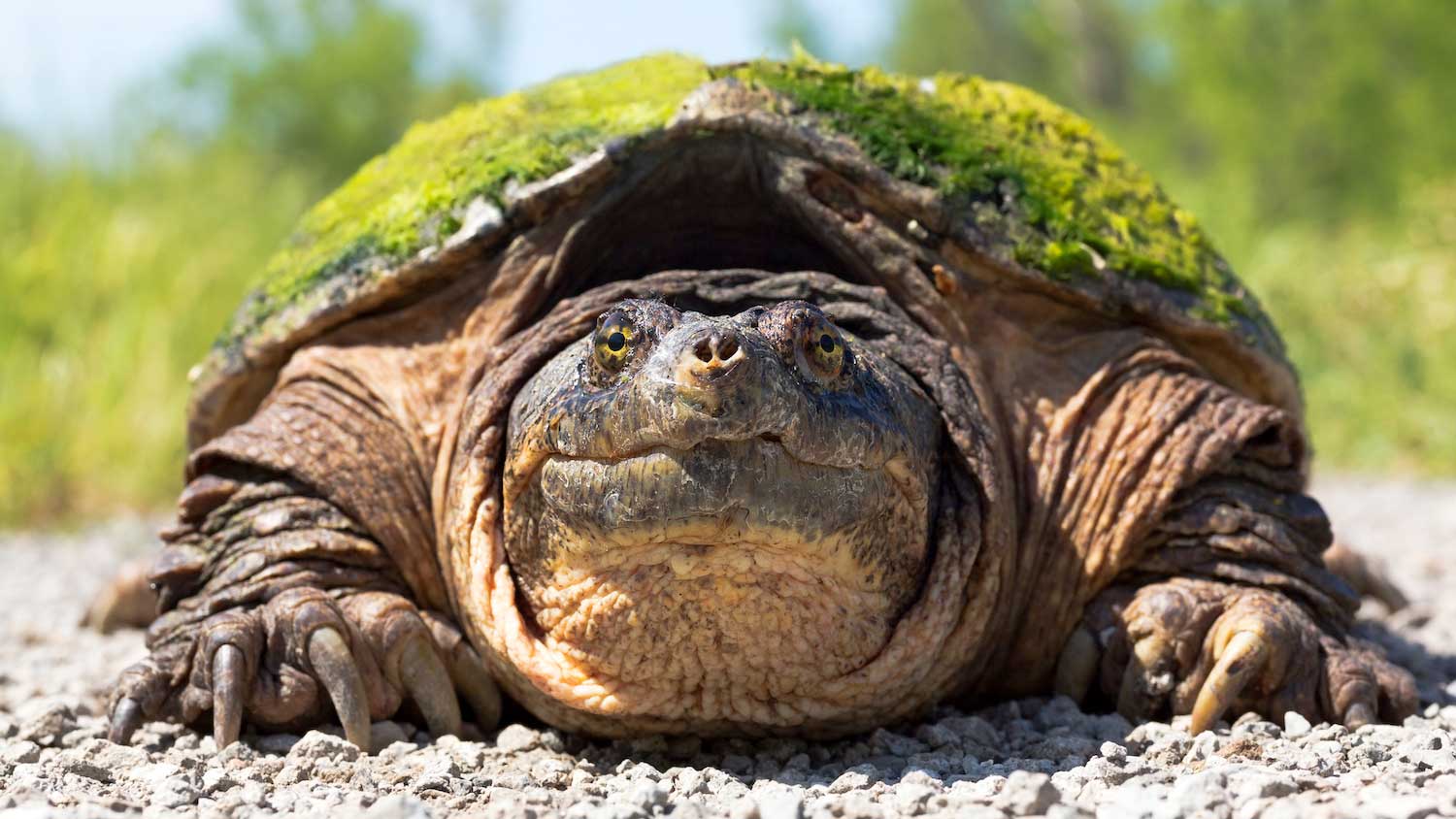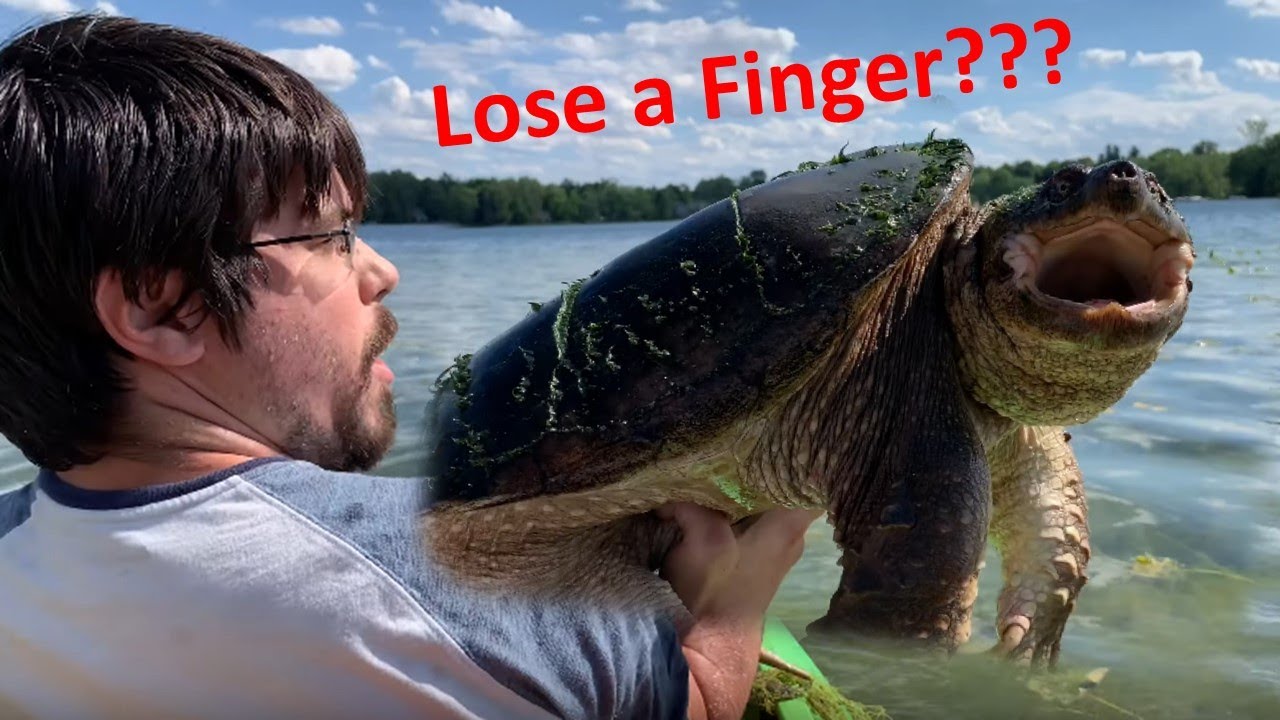Snapping turtles are known to be dangerous and aggressive, especially when provoked or cornered. Snapping turtles are a species of turtles that can be found in freshwater habitats across North America.
With their sharp beaks, powerful jaws, and long necks, these turtles are known to be dangerous and aggressive. While they generally prefer to avoid confrontation, they can react violently when they feel threatened. It’s important to exercise caution and keep a safe distance from snapping turtles in their natural habitats.
We will explore the behavior and characteristics of snapping turtles to better understand why they are considered dangerous, as well as tips on how to stay safe around them.

Credit: www.reconnectwithnature.org
Understanding Snapping Turtles
Understanding Snapping Turtles: Snapping turtles are fascinating creatures that can be found in freshwater environments across North America. They are known for their distinct physical characteristics and unique habitat and behavior. Physical Characteristics: Snapping turtles are characterized by their large, muscular bodies and powerful jaws. They have a rough, ridged shell known as a carapace, which provides them protection. Their heads are large, and they have sharp beaks that they use to snap their jaws shut with incredible force. This is where they get their name from. They also have long tails and strong, webbed feet that make them excellent swimmers. Habitat and Behavior: Snapping turtles can be found in a variety of aquatic habitats such as lakes, ponds, rivers, and marshes. They prefer areas with muddy bottoms, where they can bury themselves and lie in wait for their prey. Although they primarily feed on aquatic plants, insects, and small fish, they are opportunistic eaters and can consume a wide range of food, including carrion. These turtles are generally not aggressive towards humans unless provoked or threatened. It is important to respect their space and observe them from a safe distance. Understanding their physical characteristics and habitat can help us coexist peacefully with these amazing creatures in their natural environment.
Are Snapping Turtles Dangerous?
Snapping turtles are known for their defensive behavior and can be potentially dangerous to humans. When threatened or provoked, they will defend themselves by snapping their powerful jaws, causing serious injuries. These turtles have strong, sharp beaks capable of breaking bones or severing fingers.
It is important to understand that snapping turtles generally prefer to avoid conflict and will only attack humans if they feel threatened or cornered. They are primarily aquatic creatures and prefer to stay near water bodies where they feel safe. If left undisturbed, they pose little threat to humans.
However, it is essential to be cautious while encountering snapping turtles in their natural habitat. In case you come across a snapping turtle, it is best to keep a safe distance and avoid any interaction. Additionally, you should never try to handle or provoke them as it can escalate their defensive behavior.
If you encounter a snapping turtle on land and feel the need to move it, it is recommended to do so by carefully lifting the turtle from behind its shell using a large, sturdy object like a shovel. Avoid any direct contact with the turtle to minimize the risk of injury.
| Potential Threats to Humans | Precautions to Take |
|---|---|
|
|
|
|
|
|
Are Snapping Turtles Aggressive?
Snapping turtles can be dangerous and aggressive if provoked. Their powerful jaws and sharp beaks can cause serious injuries, making it important to keep a safe distance and avoid any potential harm.
There are misconceptions surrounding the aggressiveness of snapping turtles.
| Misconceptions about Aggression |
|---|
| Snapping turtles are often portrayed as aggressive creatures, but this is not entirely accurate. |
Snapping turtles primarily exhibit aggression as a natural defensive response. They can become territorial when defending their territory or feeling threatened.
| Natural Defensive Response |
|---|
| This behavior is a result of a self-preservation instinct, rather than a genuine intention to harm. Snapping turtles typically only resort to aggression when they perceive a potential threat and have no other option for escape or protection. |
Human interaction can also play a role in triggering aggression in snapping turtles.
Here is an overview of the factors:
| Human Interaction and Aggressiveness |
|---|
| – Provoking or handling snapping turtles inappropriately can lead to defensive responses. |
| – Approaching their nesting sites or intercepting their movement can also elicit aggressive behavior. |
| – Contrary to popular belief, snapping turtles are not actively seeking out confrontation with humans. |
Understanding the reasons behind snapping turtle aggression can help dispel common misconceptions and promote coexistence with these fascinating creatures.

Credit: www.facebook.com

Credit: www.nwf.org
Conclusion
While snapping turtles may seem intimidating, they are not inherently dangerous or aggressive creatures. Understanding their behavior and respecting their space can help humans coexist peacefully with these reptiles. By following basic safety precautions and taking steps to protect their natural habitat, we can foster a harmonious relationship with snapping turtles and appreciate their valuable role in our ecosystem.





